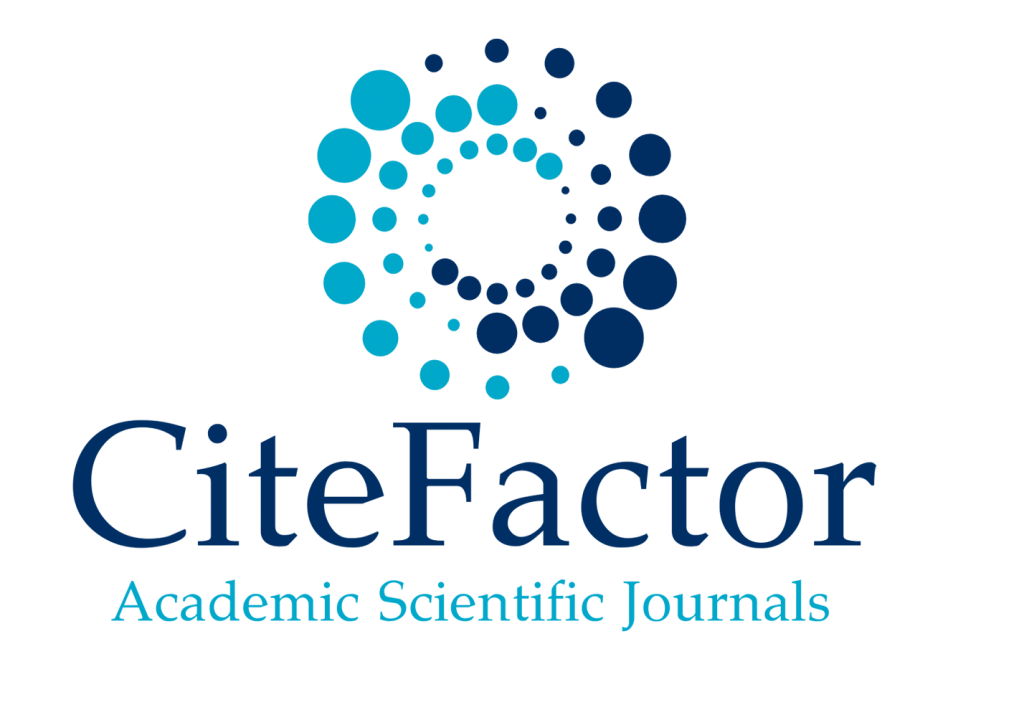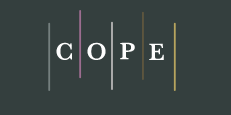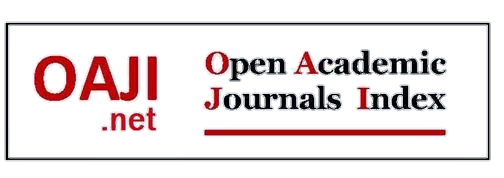Determinants of the Satisfaction of Class Xi And Class Xii Students in High School in Banten Province
1Prof. Dr. Sudadio, M.Pd, 2Dr. Evi Afiati, M.Pd, 3Usman Usman, 4 Rizki Setiawan,5Fahmi Fahmi
https://doi.org/10.47191/jefms/v8-i2-40ABSTRACT:
Banten Province has implemented the amendment to Law No. 23/2014 regarding the transfer of authority in the education sector since 2017. This regulation aims to improve the quality of education services and ensure balanced attention at local and central levels. A survey was conducted to assess high school students’ satisfaction with education services and identify areas for improvement. The qualitative survey employed random sampling to select schools, with data collected using a satisfaction questionnaire. Descriptive statistical analysis provided insights into satisfaction levels. At the same time, inferential statistics examined relationships between five independent variables (facilities, psychosocial support, curriculum, self-development, and assessment) and the dependent variable (learning quality). Results showed satisfaction percentages: learning quality (79.13%), facilities (79.35%), psychosocial support (78.28%), self-development (80.06%), curriculum (78.52%), and assessment process (81.38%). Hypothesis testing revealed a significant simultaneous effect of all independent variables on learning quality (sig. = 0.000 < 0.05). Facilities, self-development, and assessment significantly impacted learning quality individually. Overall, students responded satisfactorily to education services, though improvements are necessary to enhance specific aspects. These findings highlight the need for targeted strategies to elevate education quality and continuously achieve optimal student outcomes.
KEYWORDS:
Education Services, Learning Quality
REFERENCES:
1) Aboubakr, R. M., & Bayoumy, H. M. (2022). Evaluating educational service quality among dentistry and nursing students with the SERVQUAL model: A cross-sectional study. Journal of Taibah University Medical Sciences, 17(4), 648-657.
2) Appel, H. B., Walsh, E., Marsh, T. E. J., & Brown, C. L. (2023). Supporting students’ mental health and social emotional learning through community engagement and collaboration.Educational Research. https://doi.org/10.1080/00131881.2023.2209097
3) Aqib, Z. (2010). Profesionalisme Guru dalam Pembelajaran. Surabaya: Insan Cendekia.
4) Ardie, R., Syafrizal, S., Pujiastuti, H., & Kuswantoro, K. (2017, January 30).Mapping Model Challenge Community Learning (CLC) in Shaping Learning Independence in Banten Province. https://doi.org/10.2991/NFE-16.2017.46
5) Baars, S., Schellings, G. L. M., Joore, J. P., & van Wesemael, P. J. V. (2022). Physical learning environments’ supportiveness to innovative pedagogies: students’ and teachers’ experiences.Learning Environments Research. https://doi.org/10.1007/s10984-022-09433-x
6) Basuki, A. (2021). Pembangunan Pendidikan di Provinsi Banten. Jurnal Sumber Daya Aparatur, 3(1), 99-114.
7) Bekere, E. T., & Tlale, L. D. N. (2019). Counselling Needs and the Benefits of Counselling for Students in Schools.Gender and Behaviour. https://doi.org/10.4314/GAB.V17I2
8) Beketbaeva, A. A., Arkhabaeva, A. P., Alimbetov, K., & Baimakhanova, E. M. (2022). The importance of professional development process of school teachers in the system of continuous education.K̦ork̦yt Ata Atyndaġy K̦yzylorda Universitetìnìn̦ Habarŝysy. https://doi.org/10.52081/bkaku.2022.v61.i2.072
9) Bilqis, A., Hendriyani, M. E., Mahrawi, M., Ratnasari, D., & Rifqiawati, I. (2022).Profile of HOTS ability (High Order Thinking Skill) level analysis of biological materials for SMA/MA students in-Banten Province. https://doi.org/10.26555/joubins.v1i2.4035
10) Box, C. (2019).The Power of Formative Assessment. https://doi.org/10.1007/978-3-030-03092-6
11) Brooks, C., Kizilcec, R. F., & Dowell, N. (2020, August 12). Designing Inclusive Learning Environments.Learning at Scale. https://doi.org/10.1145/3386527.3405935
12) Cahyono, A., Febriani, E., Broto, M., & Kuswandi, A. (2022). The dilemma of the transfer of authority of sma/k from regency/city to province: study in bangka belitung islands province.Scientia. https://doi.org/10.32923/sci.v7i02.2680
13) Camargo, C. A. C. M., Camargo, M. A. F., Carvalho, M. F. de, & Oliveira, C. V. C. (2018). Classroom: A Space of Pedagogical Interaction.Open Access Library Journal. https://doi.org/10.4236/OALIB.1104958
14) Clark, I. (2015). Formative assessment: translating high-level curriculum principles into classroom practice.Curriculum Journal. https://doi.org/10.1080/09585176.2014.990911
15) Cronin Jr, J. J., & Taylor, S. A. (1992). Measuring service quality: a reexamination and extension. Journal of marketing, 56(3), 55-68.
16) Dianovi, A., Siregar, D., Mawaddah, I., & Suryaningsih, S. (2022).Guidance and Counselling in Education. https://doi.org/10.55849/wp.v1i2.95
17) Dinn, W., Yadi, R., Yulia, R., & Gilang, N. (2021).The study on professionalism teacher profiles in the provinces of west java and banten.4(02).
18) Dogani, B. (2023).Active learning and effective teaching strategies. https://doi.org/10.59287/ijanser.578
19) Elksne, G., & Rubene, Z. (2018).Emotional well-being in schools. https://doi.org/10.17770/SIE2018VOL1.3258
20) Fatmawati, N., Mappincara, A., & Habibah, S. (2019). Pemanfaatan Dan Pemeliharaan Sarana Dan Prasarana Pendidikan. Pembelajar: Jurnal Ilmu Pendidikan, Keguruan, dan Pembelajaran, 3 (2), 115-121.
21) Hamdi, M.M. (2020). Evaluasi Kurikulum Pendidikan. Jurnal Manajemen Pendidikan Islam, 4 (1), 66-75.
22) Hassanain, M. A., Dehwah, A. H. A., Sanni-Anibire, M. O., & Ahmed, W. (2020). Quality assessment of a campus medical facility: a users’ perspective approach.International Journal of Workplace Health Management. https://doi.org/10.1108/IJWHM-01-2020-0001
23) Hidayah, N. F., Sairah, N., & Yasin, M. (2024). Peran Partisipasi Masyarakat Dalam Pendidikan Di Kawasan RT. 30 Sangatta Utara. JURNAL ILMU PENDIDIKAN & SOSIAL (SINOVA), 2(01), 15-24.
24) Ikhsan, K. N. (2022). Sarana pembelajaran untuk meningkatkan hasil belajar.Academia. https://doi.org/10.51878/academia.v2i3.1447
25) Jambuge, A. P., Rainey, K. D., Wilcox, B. R., & Laverty, J. T. (2020, September 1).Assessment feedback: A tool to promote scientific practices in upper-division. https://doi.org/10.1119/PERC.2020.PR.JAMBUGE
26) Janus, E., & Bac, A. (2020).Portfolio as a method of documenting the development of professional competences on the example of occupational therapy. https://doi.org/10.5604/01.3001.0014.2634
27) Khan, A., Lodhi, F. A., Muneer, R., & Mahmood, H. (2022). The Effect of Mental Pressure Due To Covid-19 on Students’ Educational Performance: A Study from Karachi, Pakistan.Utamax. https://doi.org/10.31849/utamax.v4i1.7017
28) King-White, D., & Kurt, L. J. (2019).The Role of School Counselors in the RTI Process at the Secondary Level. https://doi.org/10.4018/978-1-5225-8322-6.CH004
29) Kumar, S. (2018). Role of Guidance and Counselling For Promoting Effective Teaching Learning Process in Higher Education.International Journal of Research.
30) Kummalasari, D.N. (2017). KEPUASAN PESERTA DIDIK TEHADAP PELAYANAN PROSES PEMBELAJARAN DI SEKOLAH MENEGAH ATAS NEGERI 7 PURWOREJO. Jurnal Hanata Widya, 6 (4), 1-6. Kurniasih, D., & Nengsih, N. S. (2017, January 1).Adjustment of Local Regulation About Formation And Structure Of Local Government. https://doi.org/10.2991/ICONEG-16.2017.65
31) Lakkala, S., Galkienė, A., Navaitienė, J., Cierpiałowska, T., Tomecek, S., & Uusiautti, S. (2021). Teachers Supporting Students in Collaborative Ways—An Analysis of Collaborative Work Creating Supportive Learning Environments for Every Student in a School: Cases from Austria, Finland, Lithuania, and Poland.Sustainability. https://doi.org/10.3390/SU13052804
32) Levina, E., & Prokofieva, E. (2021).Educational ecosystem development based on quality management standards. https://doi.org/10.1051/SHSCONF/20219901017
33) McAlexander, J. H., Kaldenberg, D. O., & Koenig, H. F. (1994). Service quality measurement. Journal of health care marketing, 14(3).
34) Muizzuddin, M. (2019). Pengembangan Profesionalisme Guru dan Peningkatan Kualitas Pembelajaran. Jurnal Kependidikan, 7 (1), 127-140
35) Nabiryo, N. R., & Sekiziyivu, S. (2019). The Influence of Classroom Environments on English Language Writing Instruction and Learning.Journal of Language Teaching and Research. https://doi.org/10.17507/JLTR.1001.08
36) Noor, T. (2018). Rumusan tujuan pendidikan nasional pasal 3 undang-undang sistem pendidikan nasional No 20 Tahun 2003. Wahana Karya Ilmiah Pendidikan, 2(01).
37) Oliver, R. L. (1993). A conceptual model of service quality and service satisfaction: Comparative goals, different concepts. Advances in service marketing and management, 2, 65-85.
38) Parasuraman, A., Zeithaml, V. A., & Berry, L. L. (1988). Servqual: A multiple-item scale for measuring consumer perc. Journal of retailing, 64(1), 12.
39) Patsun. (2015). PARADIGMA ADMINISTRASI DALAM PENGELOLAAN SEKOLAH. CENDEKIA: Jurnal Studi Keislaman, 1(2), 170–182. https://doi.org/10.37348/cendekia.v1i2.12
40) Person, M. A. (2022).Influence of teachers’ perceptions of subject knowledge on pedagogical approaches. https://doi.org/10.4324/9781003166689-15
41) Pozniak, O. (2022).The process of creating an inclusive educational environment for ensuring the holistic development of a child with sen. https://doi.org/10.32999/ksu2413-1865/2022-98-9
42) Pujianto, A. (2021). Analisis Mutu Layanan dan Tingkat Kepuasan Siswa dalam Pembelajaran Daring selama Masa Pandemic Covid 19 pada SD Kristen Satya Wacana Salatiga. Satya Widya, 37(1), 33-42.
43) Rafati, F., Arbabisarjou, A., & Dastyar, N. (2021). Analyzing the gap between perceptions and expectations of students about the quality of educational services in Southern of Iran: SERVQUAL Model. Pak J Med Health Sci, 15(4), 1334-1340.
44) Rezai, A. (2022). Fairness in classroom assessment: development and validation of a questionnaire.Language Testing in Asia. https://doi.org/10.1186/s40468-022-00162-9
45) Sari, Y. N., & Abubakar, A. H. (2024). Pengaruh Kualitas Layanan Jasa terhadap Kepuasan Siswa. Didaktika: Jurnal Kependidikan, 13(4), 4673-4684.
46) Singgih, M. L. (2008). Faktor-faktor yang mempengaruhi kualitas pendidikan pada Perguruan Tinggi. In Prosiding Seminar Nasional Teknoin.
47) Siregar, N., & S, A. (2021). Optimization of facilities and infrastructure management in improving the quality of learning.Jurnal Tarbiyah. https://doi.org/10.30829/TAR.V28I1.905
48) Subba, S., & Gotamey, H. K. (2022). The Effects of the Intervention Program on Low Achiever Students’ Learning Achievement in Classroom.Journal of Education, Society and Behavioural Science. https://doi.org/10.9734/jesbs/2022/v35i130399
49) Sudadio, Prof., Dewi, N., Shabatini, F., Firmansyah, F., & Hidayatullah, H. (2023). Profile of School Quality Based on Quality Reports in Elementary Schools in Banten Province.Journal of Economics, Finance and Management Studies,6(9). https://doi.org/10.47191/jefms/v6-i9-29
50) Sukma, F. (2020). Konsep Dasar Administrasi Sarana dan Prasarana. Jakarta: Centre for Open Science
51) Sundari, A. (2021).Manajemen Kegiatan Ekstrakurikuler Dalam Meningkatkan Prestasi Non Akademik Siswa. https://doi.org/10.31538/MUNADDHOMAH.V2I1.45
















